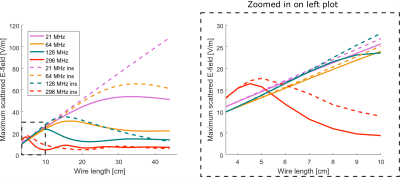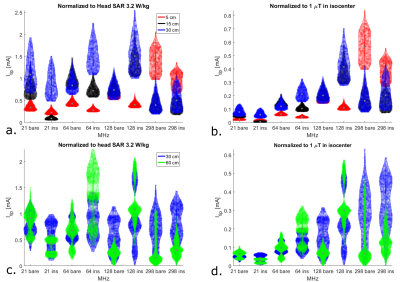Bart R. Steensma1, Janot P. Tokaya2, Peter R. S. Stijnman1, M. Arcan Erturk3, Cornelis A. T. van den Berg1, and Alexander J. E. Raaijmakers4
1Center for Image Sciences - Computational Imaging Group, University Medical Center Utrecht, Utrecht, Netherlands, 2TNO, Utrecht, Netherlands, 3Medtronic, Minneapolis, MN, United States, 4Biomedical Engineering - Medical Imaging Analysis, Eindhoven University of Technology, Eindhoven, Netherlands
1Center for Image Sciences - Computational Imaging Group, University Medical Center Utrecht, Utrecht, Netherlands, 2TNO, Utrecht, Netherlands, 3Medtronic, Minneapolis, MN, United States, 4Biomedical Engineering - Medical Imaging Analysis, Eindhoven University of Technology, Eindhoven, Netherlands
For uniform E-field exposure, worst-case RF heating in elongated metallic reduces with increasing transmit frequency. For realistic E-field exposures, for similar head SAR levels, E-field enhancement for worst-case implant length is roughly equal for all transmit frequencies.

Figure 3: maximum
scattered E-field at the tip of a metallic wire plotted against wire length.
The incident field was a uniform (phase/amplitude) plane wave of 1 V/m.
Different transmit frequencies were considered (21-298 MHz) as well as
insulated (dashed) and bare wires (solid).

Figure 4: violin plots
showing, for a wide range of investigated positions and trajectories, the distributions
of induced tip current for straight wires and realistic DBS implants (a and c
normalized to head SAR, b and d normalized to B1). Different
implants lengths, insulation types and transmit frequencies were considered.
